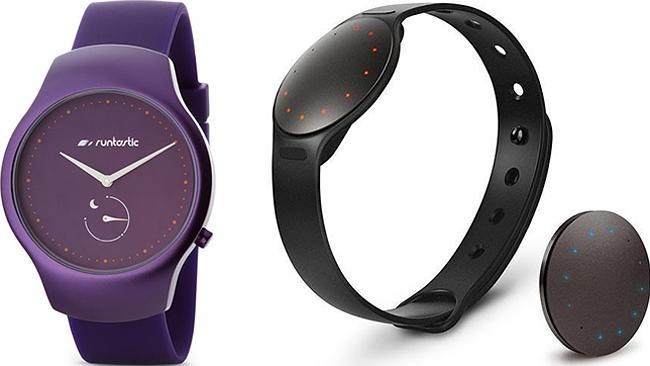Garmin, Fitbit, Runtastic, Misfit: next-gen fitness trackers
Most fitness trackers are robust, versatile and good value. Here’s how to find one that suits you.

Given the rise of the smartwatch and cutting-edge wearables, you might assume the fitness tracker would soon be a gadget of the past. You’d be wrong.
While smartwatches can handle many tasks that used to be the bread and butter of fitness trackers, the latter are still hard to beat for price and durability.
The first models that emerged about eight years ago were little more than glorified digital pedometers. The latest versions can track more types of activity, from mountain climbing to swimming, with more precision than ever.
1. For adventurers: Garmin Fenix 3. If Indiana Jones wore a fitness tracker, he might opt for the Fenix 3. This big, heavy watch with a stainless-steel bezel and buttons is engineered to survive in environs where few people would feel comfortable taking a smartwatch or standard tracker. The Fenix 3 tracks your runs, bike rides, swims (it’s waterproof to up to 100m) and even mountain climbs. There’s a heart-rate monitor, and GPS with satellite reception is built in. But what really sets it apart is its ability to monitor nuances of movement, providing rarely seen metrics such as ground-contact time, cadence and vertical oscillation (it knows if you’re climbing or running). The battery life varies depending on use: anything from about 16 hours with the GPS engaged to three months in watch mode. Bands are available in steel or leather. From $729, garmin.com/en-AU
2. For easy-to-read data: Fitbit Charge HR. In addition to tracking the basics (steps, calories burned, distance travelled) the Charge HR monitors your heart rate using a wrist-based sensor. Paired with the companion app available for Android and iOS, it provides real-time heart-rate data while you’re exercising (measured once every second) or at rest (every three seconds). If you can keep your smartphone nearby, the Charge HR can use your handset’s GPS to map your runs. The app provides an exceptionally easy-to-read snapshot of your activity. A crisp, bright sliver of an OLED screen displays your metrics, the time or call notifications from your smartphone. The rechargeable battery lasts up to five days per charge. $229.95,
fitbit.com/au
3. For simplicity: Runtastic Moment. The Runtastic Moment has no touchscreen and displays no notifications, which is what makes this fitness tracker in the form of an analog wristwatch so appealing. A dial located near the bottom of the face tells you how close you are to reaching a daily goal, such as hitting a certain number of steps, and an accompanying app — Android or iOS — lets you view more complete data on steps taken, sleep quality, distance travelled, calories burned and any running and cycling you’ve done. The Moment comes in four different versions and price points. The colourful Moment Fun (pictured here) and Basic models come with rubberised bands and aluminium casings, while the more expensive Moment Classic and Elite iterations have stainless-steel casings in silver, gold, rose gold or black, and are paired with leather or cloth watchbands. All run for up to six months on a replaceable battery. From $209.95, runtastic.net.au
4. For versatility: Misfit Shine 2. This thin disc of water-resistant anodised aluminium might look simple, but it’s one of the most versatile trackers. It tracks steps, calories, distance and sleep quality, while Misfit’s app lets you manually log specific activities such as tennis or yoga. Paired with the Misfit Link app (iOS and Android), it can also control apps on your phone and smart devices around your house. A ring of LEDs lights up to show the time or your fitness progress. Wear as a watch, a pendant, clipped to your shirt or tucked into your pocket. A watch battery will power it for up to six months. RRP $US100, misfit.com


